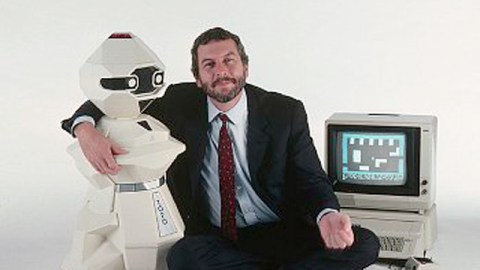Loving Robots – Come On, You Can Do It

One day, we’ll be used to little robots running around in our home. They’ll be cute and small like children, except they wont scream and squeal and make a mess. Instead, they’ll hum and purr and clean up the toys, follow you around as you dictate notes, and read a story to your elderly mother. These robots are not the kind you’ll find coldly snapping caps on bottles at a factory assembly line, aggressively lifting concrete at the construction site, or silently performing delicate surgery in the operating room. No, these household companions are social, i.e. they have human characteristics like facial expressions, body postures, and tone of voice that vary depending on the context. They will “respond” and “react” to us, which will make us care for them much as we care for pets and other humans. Eventually, almost all robots will have this interactive social side to them, but it will be robotic household companions that we’ll have our most nurturing relationships with.
Of course, right now, this all seems quite ridiculous. With the exception of the roomba, which quietly vacuums your house while you’re away, there isn’t any widely available robot for the home. That doesn’t mean they don’t exist. We may think that there are just a handful of robots in the world, but just in Carnegie Mellon University, 547 robots are leading a quasi-academic life. Social roboticist Heather Knight who runs Marylin Monrobot in New York, discovered this neat fact when she began running the first ever non-industrial robot census in the world. The census aims to understand everything about the robots, including when they were born, their personalities, and their employment status among other details. Although the census is receiving a great deal of attention in the press, Knight says she started it because she was just “looking to meet some cool robots.”
Knight’s robot census is significant for two reasons: first, a centralized catalogue of all the robots in the world is extremely useful; second, and in our opinion more importantly, the census humanizes robots. By asking questions like: Name of Robot; When was it was Conceived; When was it Born; Employment Status (Learning, Working, Retired); and Gender (Male, Female, Other), it forces anyone reading the census to acknowledge the personality and thus “human-ness” of the robot.
Given that machines will continue to proliferate in our environment, it behooves us to begin to develop friendly relationships with them. For example, what machine are you reading this blog on? Your smart phone, your laptop or desktop, your iPad? Lean back a little. Observe the machine. It’s really quite useful. It’s design is rather elegant. Yes, AT&T iPhones drop calls all the time, and Windows software makes PCs crash at all the wrong moments. But overall, these machines are mostly helpful and for the most part unobtrusive. One day, this little machine may come on two wheels that allow it to follow you around, it may have eyes at the top that joyously widen when you come near it, and hands that give you tools when you’re fixing your car. It may have tiny ears that perk up when you tell it to note something, a sweet voice that reminds you to call your sister to say Happy Birthday, and it may know to play your favorite music every time you lie on your bed. In other words, it might become a small robot. Such features attached to your iPad don’t seem like a huge stretch. Social robotics is after all as much about psychology (understanding what people like and respond to) as it is about artificial intelligence (which can be acceptably quite limited).
Are you saying you wouldn’t like this extension of your current machine? If you find yourself responding, “maaaaybe …” then you will more easily adapt to the age when we co-exist with robots. If you don’t adapt quickly, not only will you be unable to enjoy the benefit and companionship of robots, but you will also be unable to train them or recognize machine manipulation. Best to start practicing now. Go ahead. Give your laptop or phone a little stroke. It’s not that strange. One day soon, it will purr in appreciation.
Ayesha and Parag Khanna explore human-technology co-evolution and its implications for society, business and politics at The Hybrid Reality Institute.





